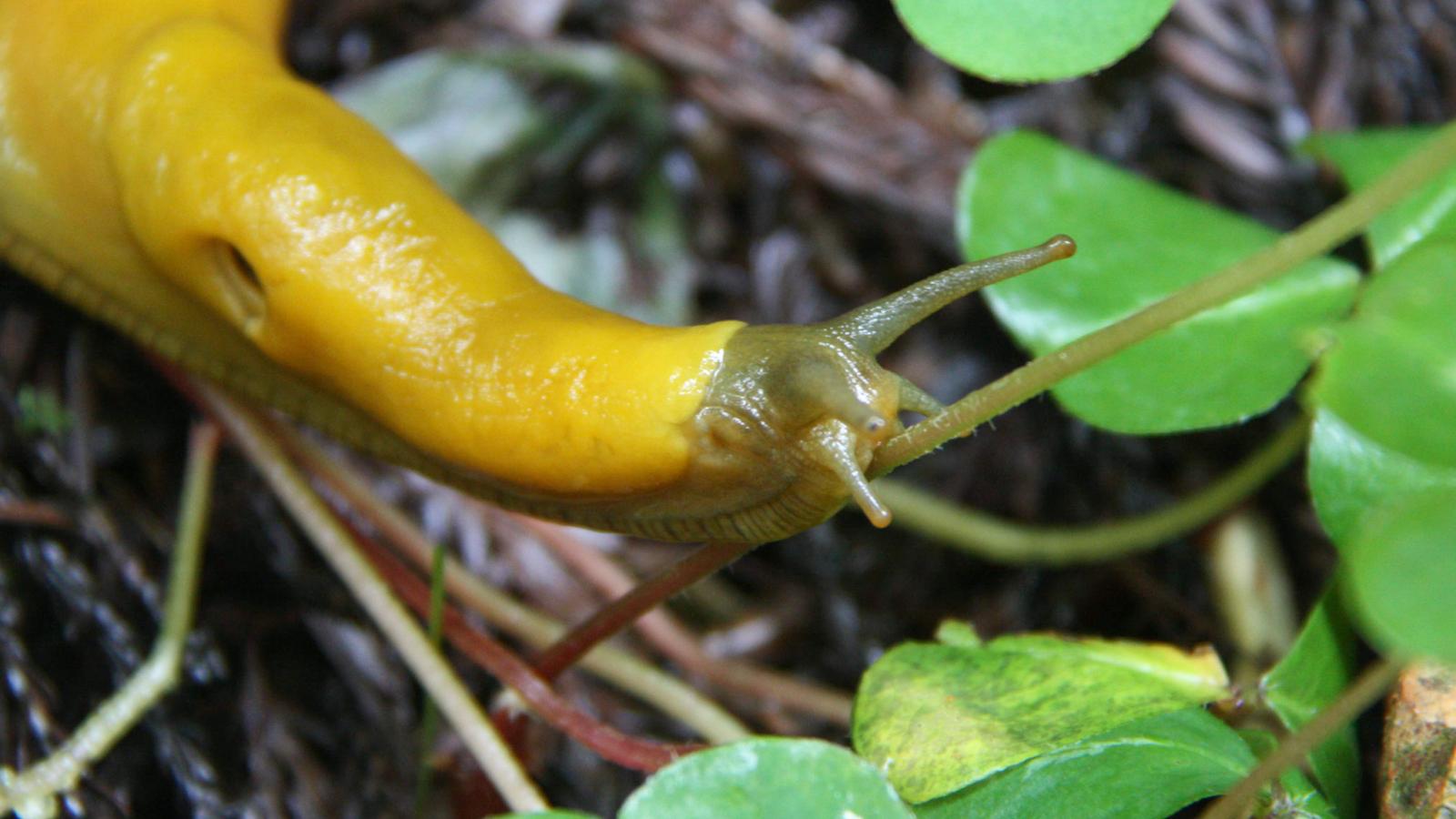Did you know that the Bay Area's iconic banana slugs (Ariolimax sp.) are the largest land mollusk in North America, and the second largest slug in the world?
In addition to its notable bright yellow color and its very large size (up to 10 inches!), a banana slug’s signature attribute is its thick, sticky slime (mucus) that covers its whole body. They use their slime for everything from locomotion to communication to nutrition! Banana slug mucus has a very special property: it acts as both a lubricant and an adhesive. This means that it can help a slug glide smoothly over rough terrain or stick to something as slippery as a glass window. Scientists are still trying to mimic this awesome property in the lab.
It would take a ton of water to product the large volumes of mucus that a slug needs to go about its day-to-day business, so banana slugs have adapted to use the moist environments that they inhabit to their advantage. Instead of producing pre-hydrated slime, the slug produces dry granules of mucus which are able to absorb the surrounding water in the environment. A single mucus granule can absorb several hundred times its weight in water.
Banana slugs can use their slime to communicate with one another through pheromones – chemical messengers that let other slugs know how the slug who left the trail is doing. Banana slug slime also contains chemicals that numb the tongue and throat of animals that try to eat a slug. The numbing chemicals plus the intense stickiness of the mucus deters predators. While it prevents banana slugs from becoming a meal for other animals, the mucus can also help provide a meal for the slug. As is slithers along, debris and plant materials cling to the slug’s rear end. Whenever it needs a snack on the road, the slug can simply turn around and feast on what’s been gathering at its tail.



